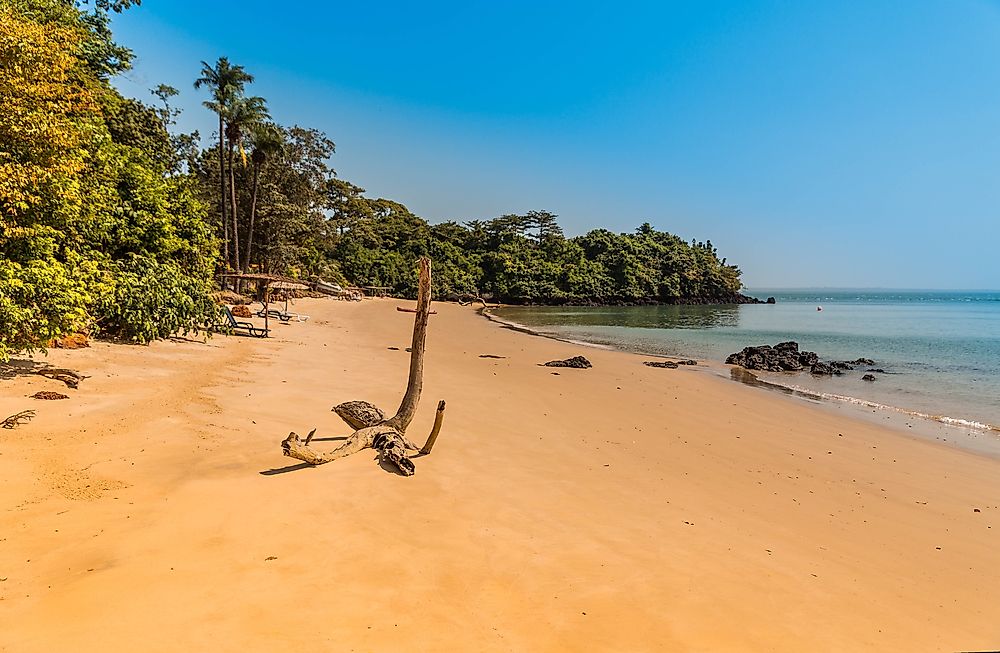What Are The Biggest Industries In Guinea-Bissau?

Guinea-Bissau is a West African country bordered by Guinea, Senegal, and the Atlantic Ocean. The country covers an area of approximately 13,948 square miles and has an estimated population of 1.9 million people. Guinea-Bissau lies on a low altitude, with the highest point being approximately 948 feet above sea level. It was colonized by the Portuguese but declared independence in 1973. Bissau, the name of its capital city, was added to the country’s name to distinguish it from Guinea. Since independence, Guinea-Bissau has been politically unstable, with no elected president successfully serving a full term. Because of the instability, the country has a weak economy characterized by very low per capita GDP.
Overview Of The Economy
Guinea-Bissau is one of the least developed countries and also among the 10 poorest in the world. After the country’s independence, the first president, Luis Cabral, tried to impose a planned economy and also supported a socialist model, leaving the country’s economy ruined. Guinea-Bissau has a history of political instability including the coup d’etat including the 2012 coup which resulted in a -1.5% growth of the GDP. In 2013, the GDP grew by only 0.9%. The slow growth of the economy is also attributed to low administrative efficiency and lack of sufficient investment as a result of political instability. In May 2015, Guinea-Bissau hosted a donor conference in Belgium. During the conference, several partners and donors pledged to support the country’s strategic and operational plan popularly known as “Terra Ranka” (A fresh start). Here are the biggest industries in Guinea-Bissau that play an important role in the country’s underdeveloped economy.
Agriculture
The economy of Guinea-Bissau mainly depends on agriculture, especially cashew crops. With a land area of 2.8 million hectares, approximately 1.6 million hectares are considered agricultural land, making it one of the most agricultural potential country in West Africa. The country has a favorable natural condition for the development of agriculture, including fertile soil and high rainfall. Agriculture accounts for over half of the GDP and is a source of income to over 80% of the population. The sector also employs over 90% of the local workforce. However, despite the role of agriculture in the economy of Guinea-Bissau, the country is yet to reach self-sufficiency in food. The main agricultural products are food crops such as potato, cassava, rice, beans, yams, tropical fruits, and sugar-cane.
Fishing
Guinea-Bissau has a coastline of approximately 718 kilometers, making the fishing industry a significant contributor to the national economy. The industry contributed about 2% to the GDP in 2015 and offered 53,000 direct and over 500,000 indirect jobs to the citizen, mainly in the artisanal fishing and processing plants. In 2015, 395,500 tons of marine fish and 30,000 tons of freshwater fish were captured. The fishery in Guinea-Bissau can be classified into artisanal and industrial fisheries. The artisanal sector comprises about 120 fishing vessels, of which only a few are motorized.
Mining
Mineral production in Guinea-Bissau is limited to small-scale production of industrial minerals such as granite, clay, sand and gravel, and limestone. The country also has underdeveloped mineral resources such as bauxite, phosphate rock, and petroleum. Phosphate deposits were discovered about 40 years ago in the Farim region. A feasibility study was conducted in the 1980s but exploration is yet to begin. Deposits of bauxite have been identified near the city of Boe, with the Bauxite Angola committing to invest US$ 500 million in the exploration. The bauxite reserve is estimated to be approximately 113 metric tons. To develop and expand the mining industry, the country hopes to attract more foreign investments.
Manufacturing
The manufacturing industry constitutes a small part of the economy of Guinea-Bissau, contributing about 15% of the country’s GDP. The main manufacturing industry is the food processing industry, including rice and groundnut processing plant and a sugar refinery. The food processing industry is one of the fastest growing urban industries in the country. Some of the agricultural products such as rice, cashew, and groundnuts are mainly processed for export. Fish and seafood are also processed for export mainly to the Asian countries. Although the food processing industry is very small compared to the neighboring country, the slow return to calm after a long period of political instability is likely to promote the growth of the industry.











